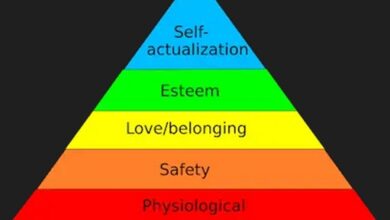What are Disruptive Behaviors menifestation Causes and Types
Disruptive Behaviors
Sometimes we can bump into people who perform actions out of context, as if they were not aware of what they are doing and could cause shame, anger, anguish and discomfort in others. This could happen in any social context and age, although it tends to be more frequent in young children. For example, you’ve no doubt heard more than once that someone has made a public provocation of any kind that made you wonder things like “did this person know what he was doing?”, “why does he have this kind of attitude?” or also “does she understand other people’s feelings?”, among others. These questions invite us to think about a problem that crosses ages and social groups, known as disruptive behaviors.
More about Disruptive Behaviors
Disruptive behaviors are those actions that alter the functioning of a space through non-compliance with norms and rules accepted by society. This type of behavior can happen at any time in life, although it tends to be more frequent in childhood.
Even so, these manifestations are considered antisocial when they are not accepted by the members of a social group and/or a community. For this same reason, disruptive behaviors can lead to penalties for the people who carry them out.
How disruptive behaviors manifest
Although not all disruptive behaviors should be considered disorders, the DSM-5 [1] includes them within the group of disruptive impulse and conduct control disorders. However, in order to establish an adequate diagnosis, a series of specific criteria must be met :
- Repetitive behaviors of non-compliance with social norms.
- Aggression to people.
- Destruction of objects.
- Lack of guilt.
- Lack of empathy .
- These types of behaviors have a duration of twelve months or more.
Causes of disruptive behaviors
In order to establish the best treatment for this type of behavior, it is advisable to find the reasons that gave rise to them. Below, we will show the main causes of disruptive behaviors :
environmental factors
Firstly, the traumatic experiences that a person has had in their childhood can act as triggers of unfavorable attitudes for the development of everyday life, among them, disruptive behavior. Here, aspects such as the creation of a person, the lack of limits on the part of authority figures or their excessive limitations, among others, come into play .
genetic factors
According to several studies carried out in this regard, it has been proven that there is an obvious relationship between disruptive behaviors as a result of some alteration in neural functioning . It is necessary to clarify that there are neurons that process information coming from the outside and give rise to exaggerated angry responses .
On the other hand, there may also be other underlying diseases that have a direct relationship with disruptive behaviors.
Types of disruptive behaviors
Although this type of behavior disorder can occur in any context, here we will focus on some types of disruptive behavior that have certain peculiarities:
- Defiant attitudes : these are behaviors that challenge any social framework. In this group, lack of respect for authority figures stands out.
- Explosive attitudes : manifestations of anger that arise suddenly in a person as a result of frustrations to which he has been exposed.
- Aggressive attitudes towards other people : this type of behavior can cause severe physical damage without the person realizing the consequences of this damage.
- Antisocial attitudes : understanding the signs that avoid social contact. In this sense, a profound lack of interest in forming part of social groups may arise, as well as the impossibility of acquiring a sense of responsibility, among others.
- Attitudes of Mythomania : Mythomania is a personality disorder characterized by the transformation of a real event according to a person’s convenience, a characteristic that usually happens in people who have disruptive behaviors.
It is worth mentioning that these types of disruptive behaviors can coexist in the same person, even if a particular characteristic tends to predominate.
Strategies to tackle disruptive behaviors
Despite the complexity that disruptive behaviors give rise to, there are some methods to lessen their consequences. Below, we will explain some strategies and activities that can be adopted to end disruptive behaviors:
keep clear boundaries
This type of behavior often originates from the lack or excess of established limits. Therefore, if the person tells you that he can perform some action that changes an established order to get what he wants and there is no clear limit, this can become something repetitive.
Given this, setting clear , concrete, and inflexible boundaries can help curb these disruptive behaviors.
Establish punishments for disruptive behavior
If a person’s way of acting causes problems in a certain place and there are no consequences, it is likely that this pattern will be repeated. On the other hand, the establishment of punishments can help better in coping with this situation.
Foster a secure bond
Generally speaking, people who exhibit disruptive behavior show a lot of feelings of insecurity. For this reason, in these cases it is convenient to establish a relationship based on trust so that the person feels understood.
If you want to know more about creating secure bonds, you can also read this article Secure Attachment: What It Is, Its Characteristics, Types, and How to Foster It .
Anticipation of situations
In some cases, the frustration unleashed at unexpected moments causes a strong discomfort in the person. Faced with this type of situation, planning and anticipating a situation can also be a good way to face disruptive behaviors.
Examples of disruptive behaviors
To bring greater clarity to this topic, below are some examples of disruptive behaviors that may be common in social spheres :
- Example 1 : A child is sitting in a classroom in the middle of a class. As the content that the teacher explains is boring, she starts hitting her classmates and various objects in the room. In this case, the disruptive behavior derives from the discomfort felt throughout the explanation of the matter.
- Example 2 : A person goes to work and is informed that their employment contract has not been renewed. Faced with the frustration that this situation generates, she starts throwing objects out the window and threatening to physically harm the other employees. Afterwards, she hits and injures one of them. In this way, frustration was channeled through disruptive behavior.
It is worth noting that in the examples above attention was not paid to any particular moment and are for explanatory purposes only.



